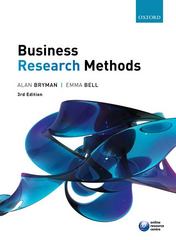Answered step by step
Verified Expert Solution
Question
1 Approved Answer
Talent development processes anchored on a clear, consistent performance management model help enhance the experience for all. by Laura Coons, June 1 2 , 2
Talent development processes anchored on a clear, consistent performance management model help enhance the
experience for all.
by Laura Coons, June
Peter Drukers famous adage culture eats strategy for breakfast is often used in organizational conversations about building
the organizational value proposition that helps attract and retain top talent. In my experience, that expression can be
misapplied to suggest that the softer side of culture is the most important aspect of an organizations approach the nontraditional engagement experiences aimed at making a workplace fun.
Dont get me wrong Im a huge proponent of fun workplaces. But it often seems that performance is an overlooked or
underrepresented component of making a workplace engaging, exciting and the kind of place people want to be part of
Performanceoriented cultures where goals are ambitious and teams work hard to achieve big things can be some of the
most fun, most compelling places for top talent to join and stick around. Winning together bonds teams to each other and to
the company, particularly when those victories are founded on a performance culture.
Creating a culture of strong performance requires three components: clear goals regularly aligned within and across teams
simple but strong progress monitoring with consistent performance trend analysis and discussion and straightforward,
sustainable tools aimed at building capability to accomplish goals. Talent development processes anchored on a clear,
consistent performance management model help enhance the experience for individuals and teams by tamping down noise
and making it easier to see through to the core objectives.
Accomplishing these three foundational elements of a performance culture takes time and practice but in any
organization, the existing performance management model can be used as the starting point. Most organizations do some
form of goal setting and performance measurement.
The increasing popularity of models like objectives and key results OKRs through which more regular check ins and goal
realignment are pillars of the framework suggests there is appetite both for leaders and individuals to do more consistent,
recurring evaluation of performance. While many organizations use a goal setting and performance measurement practice,
a key differentiator is the regular, structured, enterprisewide tracking of performance against objectives. With OKRs, a
quarterly cadence is most common. In some instances, monthly monitoring and rolling up of results is successful.
The benefits of such a system are multiple: leaders engage in more regular feedback practice, teams are more consistent
about updating goals to reflect accurately the agility they demonstrate in pivoting based on organizational needs, and crossfunctional alignment is more likely because of those teamlevel discussions. Most importantly, individuals in the
organization have both a crystalclear picture of their goals and a regular review of their impact. As the practice is
strengthened, that understanding of impact is closely connected to awareness of performance trend. And the dreaded endofyear performance rating surprises can be avoided.
finally, data on turnover consistently suggests that when people leave organizations, career development is the primary
reason. The price tag for turnover exceeded $ billion in more than doubling since Many of the outcomes of
performance management drive career development: talent review, succession planning and career conversations or
development plans. When performance is not a central element of organizational practice, career development cannot be
either. Clear, aligned, regularly tracked performance measures can help organizations hang onto their valuable talent. And
knowing an organization is primed to focus on goal achievement and winning together can serve as a powerful attraction
tool for high potential indiviual.
Evaluate the different performance management approaches against the context of the article.
Step by Step Solution
There are 3 Steps involved in it
Step: 1

Get Instant Access to Expert-Tailored Solutions
See step-by-step solutions with expert insights and AI powered tools for academic success
Step: 2

Step: 3

Ace Your Homework with AI
Get the answers you need in no time with our AI-driven, step-by-step assistance
Get Started


